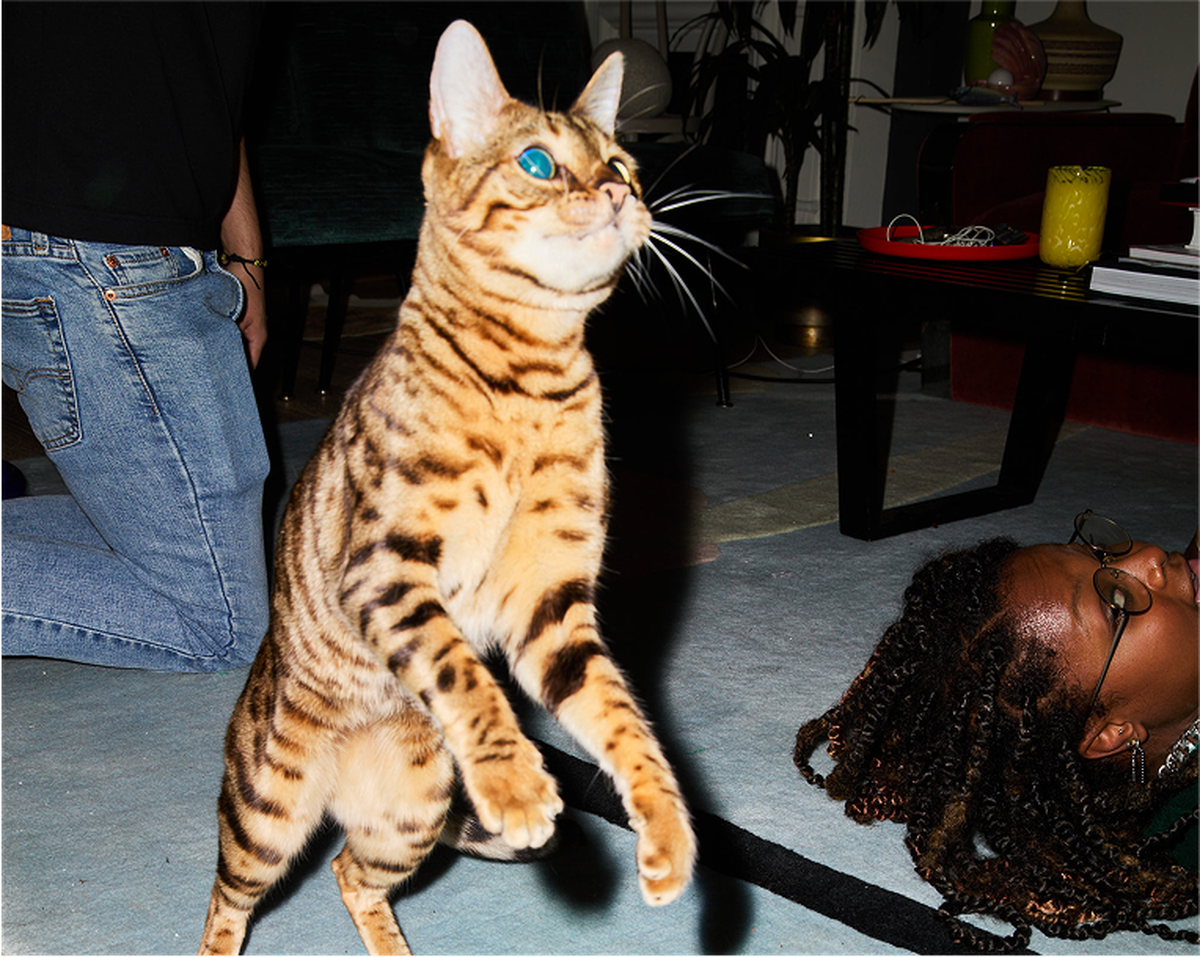The science behind your cat’s superpowers

Read time: 5 min
Halloween is the season of trick or treats, broomsticks and things that go bump in the night — but let’s be honest, your cat doesn’t need a fancy-dress cloak and fangs to be mysterious.
With built-in night vision, supernatural balance and senses sharp enough to spot a ghost (or, errr, a spider), cats are the real creatures of the night.
So grab your pumpkin-spiced latte and let’s uncover the science behind your cat’s freakishly good superpowers.
Superpower 1: Seeing in the dark… kinda
Cats can’t see in total darkness — no creature can — but their night vision is leagues beyond ours.
Not only do cats have excellent peripheral vision, their eyes have a high number of rod cells, which are super sensitive to low light, plus a reflective layer behind the retina called the tapetum lucidum (Latin for “bright tapestry”). That’s what makes their eyes glow in torchlight — it bounces light back through the retina, letting them see in about one-sixth of the light humans need.
So while you’re tripping over shoes at 2am, your cat’s casually navigating the hallway like it’s a catwalk.
Superpower 2: Detecting the undead (and Nibbles)
Cats can hear frequencies up to 64 kHz — that’s nearly three times higher than humans. Their swivelling, satellite-dish ears can rotate 180 degrees to pinpoint exactly where a sound is coming from.
Evolution gave them this gift for hunting squeaky prey, but it also means they hear every cupboard door, fridge hum and rattle of a tube of Nibbles.
If they seem to stare at nothing, they’ve clocked a sound wave we can’t (orrrr maybe they've spotted a ghost 👻).
Superpower 3: The gravity-defying righting reflex
When cats fall, they twist their bodies mid-air thanks to something called the righting reflex.
It kicks in when they sense a drop, allowing them to rotate their head, spine and legs to land (usually) on their feet — a survival adaptation honed through millennia of tree-climbing ancestors.
It’s not foolproof, of course, but combined with a flexible spine and low body weight, it explains how cats can pull off those dramatic leaps from bookshelves without a scratch.
Superpower 4: Walking the (very thin) line
Cats’ inner ear vestibular system — the bit that controls balance — is hyper-sensitive. Add in their whiskers, which help them gauge space and airflow, and you’ve got the perfect formula for that tightrope walk along the back of your sofa. Next up: a witch's broomstick? 🧹
Superpower 5: Nine lives, backed by biology
The myth of nine lives probably comes from cats’ uncanny knack for surviving scrapes that would floor other animals.
Part of it is agility and reflexes, but they’ve also got efficient wound healing and purring frequencies (25-150 Hz) that may help stimulate tissue regeneration and bone repair — something even NASA’s looked into.
So while “nine lives” might be folklore, the science behind their resilience is very real.
Superpower 6: The power of the purr
Cats’ purrs aren’t just cute, they’re complex vocalisations used to self-soothe, heal and communicate.
They can even adjust their pitch to include a subtle “cry” frequency that humans find hard to ignore — basically, an evolutionary hack to make you open the treat drawer right now.